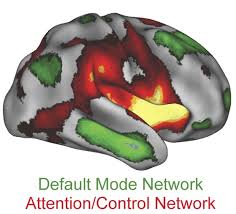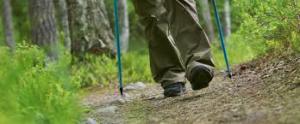Gentle Reader,
To my delight, my signature byline, Be Well, Do Well and Keep moving, points as much to brain health as managing arthritis. Recent studies show that walking improves brain health.
In August 2010, Live Science reported on a study involving a group of “Professional Couch-Potatoes.” This is what one researcher called the 69 adults, aged 59 – 80, who were sedentary before entering the study. I mean sedentary: they reported exercising no more than twice in the previous six months. The study compared this group of inactive people with thirty-two 18 – 35 year olds.

The result? Walking at one’s own pace for 40 minutes three times a week can enhance the connectivity of important brain circuits and combat declines in brain function associated with aging and increase performance on cognitive tasks.
The goal was not to study specific brain function, but to study connectivity. “Almost nothing in the brain gets done by one area; it’s more of a circuit,” study researcher Art Kramer, psychology professor at the University of Illinois, said in a statement. “These networks can become more or less connected. In general, as we get older, they become less connected, so we were interested in the effects of fitness on connectivity of brain networks that show the most dysfunction with age.”
Previous studies showed a loss of coordination in the DMN (Default Mode Network) when a person is least engaged with the outside world either passively observing something or simply daydreaming. This networking failure is a common symptom of aging and in extreme cases can be a marker of disease, study researcher Michelle Voss said.
 People with Alzheimer’s disease tend to have less activity in this network and they tend to have less connectivity, Voss said. Low connectivity means that the different parts of the circuit are not operating in sync. Like poorly trained athletes on a rowing team, the brain regions that make up the circuit lack coordination and so do not function at optimal efficiency or speed.
People with Alzheimer’s disease tend to have less activity in this network and they tend to have less connectivity, Voss said. Low connectivity means that the different parts of the circuit are not operating in sync. Like poorly trained athletes on a rowing team, the brain regions that make up the circuit lack coordination and so do not function at optimal efficiency or speed.
In a healthy, young brain, activity in the DMN quickly diminishes when a person engages in an activity that requires focus on the external environment. Older people, people with Alzheimer’s disease and those who are schizophrenic have more difficulty “down-regulating” the DMN so that other brain networks can come to the fore, Kramer said.
In this study by Kramer, Voss and their colleagues, they found that older adults who are more fit tend to have better connectivity in specific regions of the DMN than their sedentary peers. Those with more connectivity in the DMN also tend to be better at planning, prioritizing, strategizing and multi-tasking.
Just by walking three times a week for 40 minutes, DMN connectivity was significantly improved in the brains of the older walkers, but not in the stretching and toning group, the researchers report.
If you have friends or relatives who sit around with the remote, tell them about this study and see if they would be willing to get out and walk. It could make a big difference.
One Way to Ward Off Alzheimer’s: Take a Hike
The study began with 299 dementia-free participants, ages 70 to 90, in 1989. Researchers measured how many blocks they walked per week and, at 9 and 13 years after the initial examination, scientists assessed them with high-resolution magnetic resonance imagining (MRI).
In a final evaluation,116 of these people were diagnosed with dementia or mild cognitive impairment (MCI), which can lead to Alzheimer’s disease, while 169 (excluding those deceased prior to the follow-up) remained free of these conditions.
No one has taken a snap shot of an elderly group and followed them over time prior to this study. The participants agreed to walk at least one mile per day. Erickson’s study found that walking at least one mile per day significantly enhanced the volume of several regions of the brain, including the frontal lobe, which is involved in reasoning and problem-solving.
The researchers also found people who walked that distance reduced their risk of cognitive impairment by about half. However, walking more than one mile every day did not further improve brain volume.
We don’t need to do much, but we do need to do something, every day. In my recent visit with the Sports Medicine doctor, she dissuaded me from getting a cortisone shot for my sciatic pain. She gave me some new stretches and said, “Walk 30 minutes every day without fail. It’s the best medicine.”
If my pain is acute, I leave home with walking sticks.

Before long, the pain eases up. BTW, I also take several of Shaklee’s Pain Relieve Complex herbal tablets during the day, depending on how bad the pain is.
It looks as though this advice is helping my brain as well as my joints.
Join me!
Be Well, Do Well and Keep Moving,
Betsy
206 933 1889
www.hihohealth.com shopping for Shaklee
www.EmpoweredGrandma.com for travel suggestions and reflections
